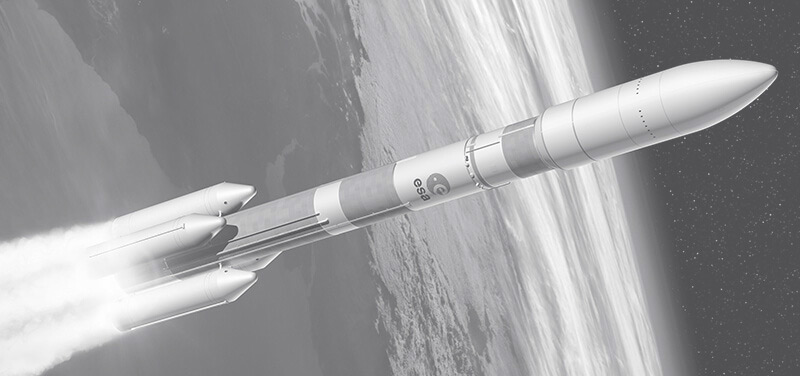Ariane
Ariane is a family of European-made launcher vehicles, initially manufactured by a consortium of the European Space Agency -ESA-, consisting of France (64%), Germany (20%), United Kingdom (5%), Spain (2%) ) and other countries (7%), as well as for the launch of satellites in geostationary orbit and the Giotto space probe.
The first launch of an Ariane vehicle was made on December 24, 1979: it was a three-stage launcher, 47 meters long and with a power capable of placing a maximum load of 2580 kg into geostationary orbit. In 1980, the construction of these vectors was transferred to the company Arianespace, which improved these vehicles with the Ariane 4 series, with three stages: the first one with four engines and the next two with one, with the capacity to attach four auxiliary propulsors more, and put into orbit a load of up to 4200 kg.
The family of launchers has quickly taken an important part of the market for launching satellites in geostationary orbit. In 2009, the Ariane shuttle held 50% of the market. The current version is the Ariane 5 model, with a higher payload and developed for the launch of manned vehicles, commanded by the European space shuttle Hermes (although the program was finally canceled) and for the implementation of the installation program for a lunar base, through the LEDA soft landing program.
Versions:
- Ariane 1, first successful takeoff December 24, 1979
- Ariane 2, first successful takeoff November 20, 1987
- Ariane 3, first successful takeoff August 4, 1984
- Ariane 4, first successful takeoff June 15, 1988
- Ariane 5, first successful takeoff on October 30, 1997
- Ariane 6, currently in development, first launch planeed for 2021-2022.1
In its different versions the Ariane rockets have been present in several programs such as:
- Hispasat (European)
- INMARSAT
- MUSES (Japanese)
- KOSESASAT (Korean)
- SAC (Argentine)











